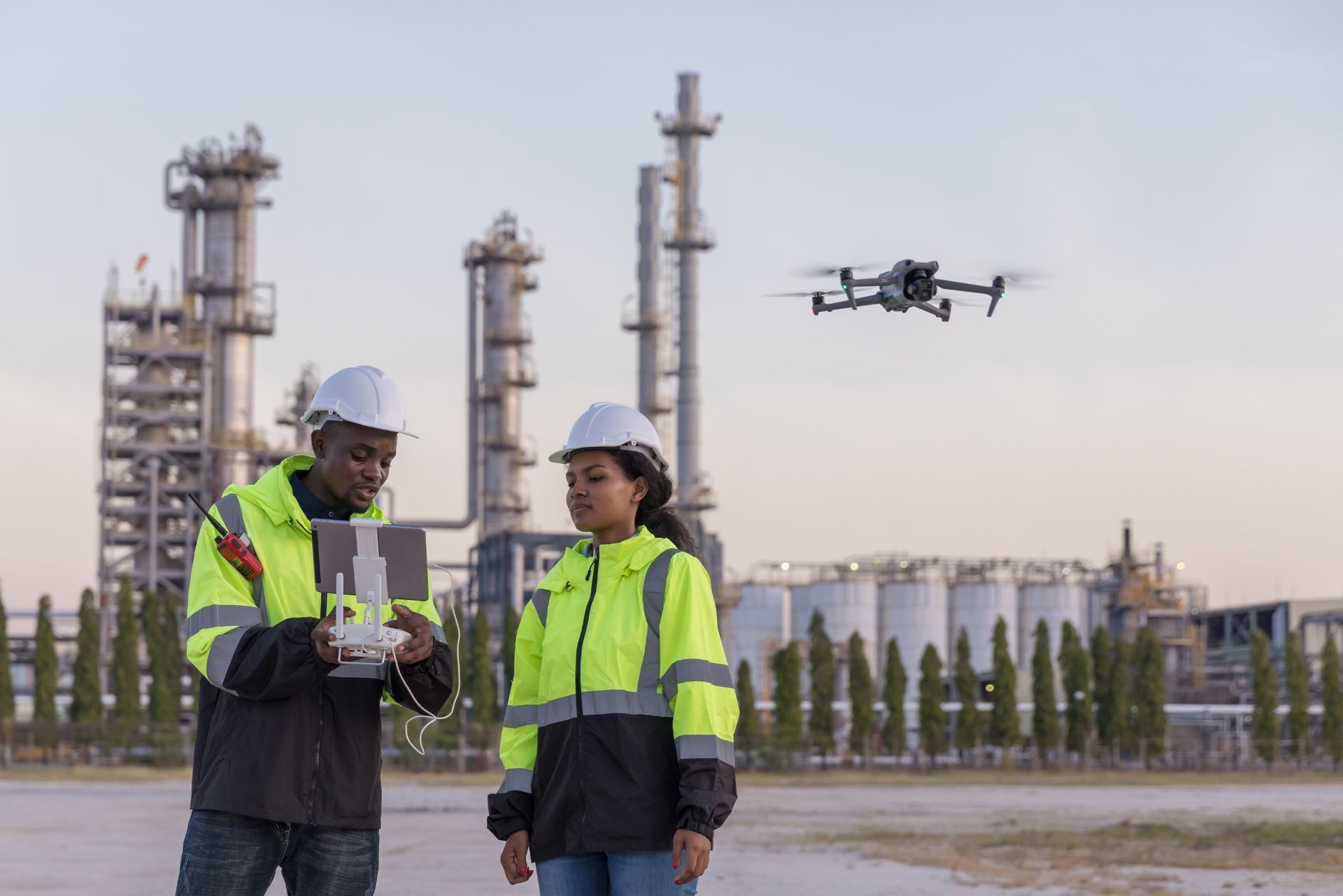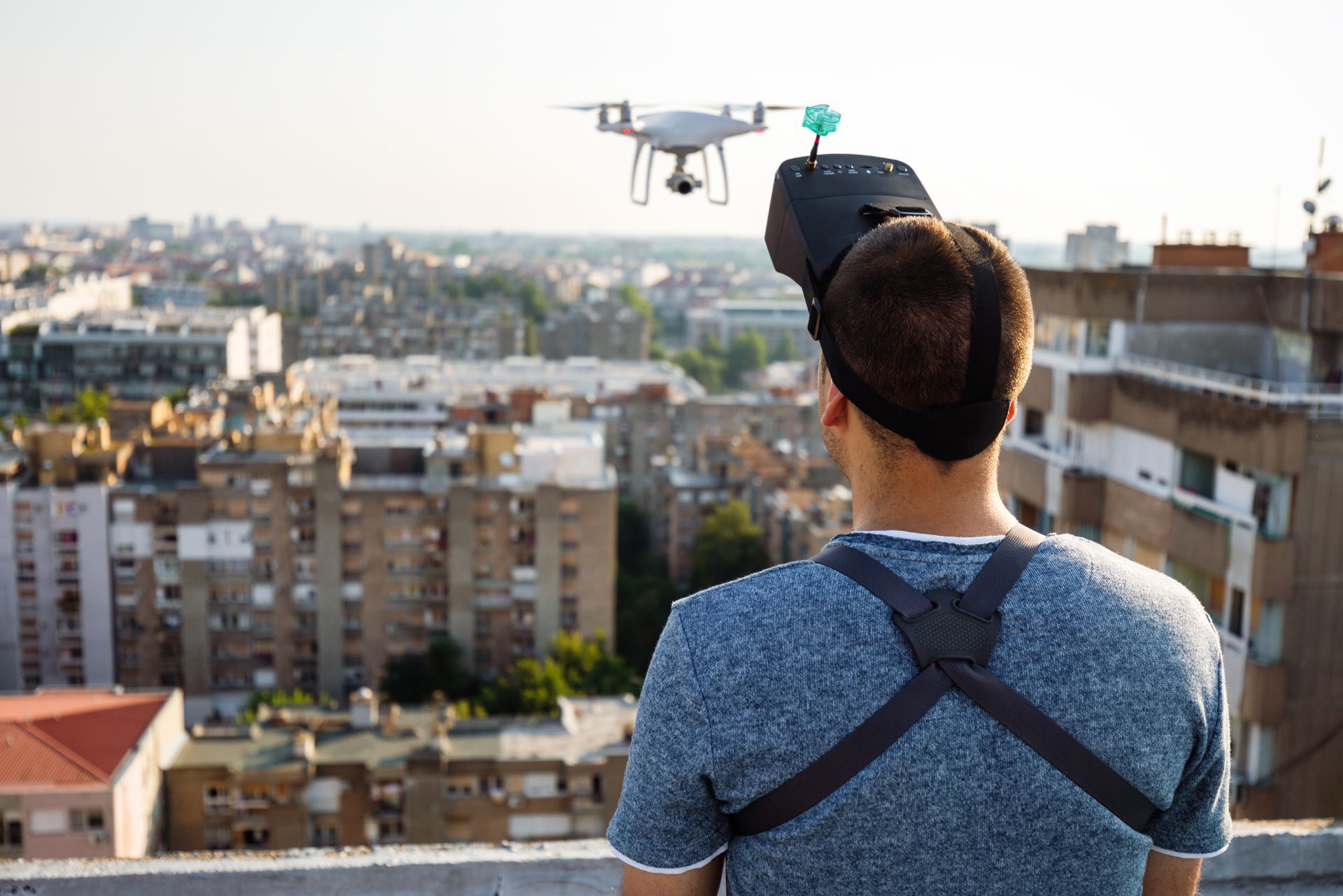Top 3 Recommended Business Policies
Index
Contact Us
Drones have become an integral part of Maryland’s skies, serving a variety of recreational, commercial, and public safety purposes. With over 15,000 registered recreational drone users and nearly 2,000 commercial operators in the state, the drone ecosystem is rapidly expanding. This growth brings with it a host of opportunities—and risks—that make drone operator insurance an essential consideration for anyone flying in Maryland.
Understanding the nuances of drone insurance, the regulatory landscape, and emerging applications is crucial for drone operators looking to protect their investments and ensure compliance. This article explores the current state of drone use in Maryland, the importance of insurance coverage, and how the industry is evolving to meet new challenges.
The Growing Drone Landscape in Maryland
Maryland is experiencing a dramatic increase in drone activity, reflecting a nationwide trend. According to Maryland Matters, there are currently 15,544 registered recreational drone users and 1,983 registered commercial drone users in the state. This is part of a broader national surge, with the FAA estimating that at least 1.7 million small drones are operated across the U.S., outnumbering manned aircraft by more than five times.
This rapid growth has prompted law enforcement agencies and businesses alike to integrate drones into their operations. For example, the Montgomery County Police Department has been using drones since November 2023 to respond to emergency calls, having already deployed them nearly 1,100 times by mid-2024. This innovative use highlights how drones are becoming vital tools for public safety, but also raises questions about privacy and regulatory oversight. As drone technology continues to evolve, Maryland is also witnessing an increase in community-based drone programs, where local residents are trained to operate drones for search and rescue missions, environmental monitoring, and even local event coverage. These initiatives not only foster community engagement but also enhance the capabilities of local agencies, allowing them to respond more effectively to various situations.
Why Drone Insurance Matters
With so many drones in the air, the risk of accidents, property damage, or privacy violations increases. Drone insurance provides financial protection against these risks, covering potential liabilities such as bodily injury, property damage, and legal fees. For commercial operators, insurance is often a requirement to comply with FAA regulations and contractual obligations. The complexities of drone operations mean that traditional insurance policies may not adequately cover the unique risks associated with flying drones, making specialized drone insurance an essential consideration for operators.
Moreover, the drone insurance market is growing rapidly. Companies like BWI Fly have issued over 1,000 drone-specific insurance policies, reflecting the increasing demand for tailored coverage that addresses the unique risks of drone operations. This growth is fueled by the expanding use of drones in industries ranging from real estate and agriculture to emergency services and delivery. As businesses recognize the potential of drones to enhance efficiency and reduce costs, they are also becoming more aware of the importance of protecting their investments. The rise of drone delivery services, for instance, has led to new insurance products designed to cover the specific risks associated with transporting goods via unmanned aerial vehicles, ensuring that both operators and consumers can benefit from this innovative technology with peace of mind.

Types of Drone Insurance Available in Maryland
Drone insurance policies typically fall into two main categories: liability insurance and hull insurance. Liability insurance covers damages caused to third parties, while hull insurance protects the drone itself from damage or loss.
Liability Insurance
This is the most critical type of coverage for drone operators, especially those flying commercially. It protects against claims arising from injury or property damage caused by the drone. For example, if a drone accidentally crashes into a vehicle or injures a bystander, liability insurance helps cover the costs associated with these incidents.
Given Maryland’s active drone community and the increasing use of drones by law enforcement and businesses, liability insurance is essential to mitigate financial risks. It also helps operators comply with FAA regulations, which often require proof of insurance for commercial drone flights. Furthermore, many businesses are now recognizing the importance of having adequate insurance coverage as part of their risk management strategy, especially in industries such as real estate, photography, and agriculture, where drones are frequently employed to enhance operational efficiency and data collection.
Hull Insurance
Hull insurance covers the physical drone and its equipment in case of damage or theft. This is particularly important for operators using expensive drones or flying in challenging environments where the risk of accidents is higher. For instance, Montgomery County Police’s use of drones in emergency situations underscores the need for hull coverage to maintain operational readiness. Additionally, as drone technology advances and operators invest in high-end models equipped with sophisticated cameras and sensors, hull insurance becomes increasingly vital to protect these investments from unforeseen incidents such as crashes, water damage, or vandalism.
Specialized Coverage Options
Some insurers offer additional coverage options tailored to specific drone applications. These can include coverage for data loss, payload insurance for drones carrying sensitive equipment, and coverage for drone delivery services, which Maryland is currently testing for medical packages on the Eastern Shore. Such specialized policies reflect the evolving nature of drone technology and its diverse uses. As the drone industry continues to expand, operators may also find coverage options that address emerging risks, such as cyber liability insurance to protect against data breaches or hacking incidents that could compromise sensitive information collected during drone operations. This adaptability in insurance offerings not only provides peace of mind for operators but also encourages innovation within the industry, allowing for the safe exploration of new applications and technologies.
Balancing Innovation and Privacy Concerns
The use of drones by public safety agencies like the Montgomery County Police has sparked important discussions about privacy and public safety. While drones offer significant benefits—such as rapid emergency response and enhanced situational awareness—they also raise concerns about surveillance and data security.
Jay Stanley of the ACLU has highlighted ten key issues communities should consider before allowing police to use drones, emphasizing the need for clear policies and transparency. These considerations include limits on data retention, restrictions on surveillance, and community input on drone deployment.
Addressing these concerns is vital for maintaining public trust and ensuring that drone operations respect privacy rights. Insurance policies can sometimes incorporate clauses related to data security and privacy compliance, further protecting operators from legal risks.
Moreover, the integration of drones into public safety protocols necessitates a robust framework for accountability. This includes establishing oversight committees comprising community members, legal experts, and civil rights advocates who can review drone usage and ensure adherence to established guidelines. Such measures can help mitigate fears of misuse and foster a collaborative environment where technology serves the public good without infringing on individual rights.
Additionally, advancements in drone technology are also paving the way for innovative solutions that prioritize privacy. For instance, some drones are now equipped with advanced encryption methods and anonymization features that can help protect the identities of individuals captured in footage. As these technologies evolve, they could provide a pathway for law enforcement to utilize drones effectively while simultaneously safeguarding the privacy of citizens, thus striking a balance between innovation and ethical responsibility.
Data Security and Drone Operations
One common concern about drones, especially those manufactured by foreign companies, is data security. However, industry experts like DJI’s Adam Welsh have reassured users by stating that data access is controlled by U.S. employees from U.S. servers, mitigating fears about unauthorized access or misuse. This level of transparency is crucial in building trust among users, particularly in sectors where data integrity and confidentiality are paramount. With the rapid advancement of drone technology, the potential for data breaches has become a pressing issue, making it essential for manufacturers to implement robust security protocols to safeguard sensitive information.
This assurance is particularly relevant for Maryland’s law enforcement agencies, which use drones for sensitive operations. Ensuring secure data handling is not only a technical issue but also a factor in regulatory compliance and public acceptance. The integration of drones into law enforcement has opened up new avenues for surveillance and crime prevention, but it also raises ethical questions regarding privacy and the extent of governmental oversight. As these agencies navigate the delicate balance between utilizing advanced technology and respecting citizens' rights, the implementation of stringent data security measures becomes even more critical. Furthermore, ongoing training for personnel on data handling and privacy regulations is essential to maintain public trust and ensure that drone operations are conducted responsibly.

Economic Impact and Industry Growth
The economic potential of drones extends beyond immediate operational benefits. A study by PricewaterhouseCoopers estimates that drones could save the insurance industry up to $6.8 billion annually by reducing fraud and improving risk monitoring. This highlights how drones, when integrated with insurance products, can drive efficiency and cost savings. The use of drones for aerial surveillance and data collection allows insurers to assess risks more accurately and quickly, leading to more informed underwriting decisions. Furthermore, the ability to conduct real-time assessments following natural disasters can expedite claims processing, ultimately benefiting both insurers and policyholders.
Maryland’s drone insurance market is poised to grow alongside these technological advances. With companies like BWI Fly actively issuing drone-specific policies, operators have more options than ever to secure appropriate coverage. This growth signals a maturing market that recognizes the unique challenges and opportunities drones present. As the regulatory landscape evolves, with the Federal Aviation Administration (FAA) implementing new rules for commercial drone use, the insurance sector is adapting by developing tailored products that address liability, equipment damage, and operational risks. Additionally, the rise of drone delivery services and agricultural applications is further fueling demand for specialized insurance solutions, creating a dynamic environment for both insurers and drone operators.
Looking Ahead: The Future of Drone Insurance in Maryland
As drone technology continues to evolve, so will the insurance products designed to support it. Maryland’s ongoing experiments with drone delivery for medical packages demonstrate the expanding scope of drone applications, which will require innovative insurance solutions to address new risks. The integration of drones into everyday logistics is not only transforming the way goods are transported but also raising questions about liability and risk management. For instance, in scenarios where a drone malfunctions during delivery, the implications for both the operator and the recipient can be significant, necessitating policies that cover a range of potential incidents.
Regulatory frameworks will also play a critical role in shaping the drone insurance landscape. Operators must stay informed about FAA regulations, state laws, and local policies to ensure compliance and adequate coverage. Engaging with industry experts and insurance providers can help drone users navigate these complexities. Additionally, as drone technology advances, we may see new regulations that address emerging concerns such as privacy, airspace management, and environmental impact. This evolving regulatory environment will likely influence the types of coverage available, pushing insurers to adapt their offerings to meet the changing needs of drone operators.
In conclusion, drone operator insurance in Maryland is not just a protective measure—it is a key enabler of safe, responsible, and innovative drone use. Whether for recreational flyers, commercial businesses, or public safety agencies, securing the right insurance coverage is essential to harnessing the full potential of drones while managing their risks. As the industry matures, we can expect to see more tailored insurance products that reflect the unique challenges and opportunities presented by drone technology.
For more detailed information on Maryland’s drone user statistics and regulatory updates, visit
Maryland Matters. To explore drone insurance options,
BWI Fly offers comprehensive policies tailored to drone operators’ needs. As the market grows, it will be crucial for operators to compare different insurance providers and understand the specific terms and conditions of their policies, ensuring they are adequately covered for the unique risks associated with their drone operations. Furthermore, educational resources and workshops could become increasingly valuable, helping operators to not only comply with regulations but also to understand the intricacies of risk management in the drone industry.

